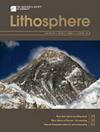Final Amalgamation Processes of the Southern Altaids: Insights from the Triassic Houhongquan Ophiolitic Mélange in the Beishan Orogen (NW China)
IF 1.7
4区 地球科学
Q3 GEOCHEMISTRY & GEOPHYSICS
引用次数: 0
Abstract
The Permian–Triassic tectonic setting is still controversial in the southern Altaids. The Beishan orogen is an ideal region to address the final tectonic of the Altaids. These systematic mapping, geochemistry, and geochronology studies on the Houhongquan ophiolitic mélange in the south Beishan are conducted to address this issue. New mapping reveals that the Houhongquan ophiolitic mélange consists of blocks of gabbro, basalt, chert, granite, and strongly deformed and cleaved sandstone in the southern Beishan. The studies reveal that the mafic fragments are relics of normal-mid-ocean ridge (N-MOR) and suprasubduction zone (SSZ) types of oceanic lithosphere. The four sandstone matrix samples yield the maximum depositional ages of 222±5 Ma, 233.8±2.3 Ma, 263.4±2.5 Ma, and 263.5±2.8 Ma, respectively, indicating that the youngest sandstones were tectonic emplaced in the Houhongquan ophiolitic mélange after ca. 222 Ma. The sandstone matrices display two types of age spectra. Early Permian sandstones have a single Devonian to Early Permian peak age patterns, indicating the existence of an independent Permian intraoceanic arc. In contrast, Late Triassic sandstones have multiple peaks with some Precambrian zircons, suggesting that they were sourced from a continental arc. Accordingly, we consider that the Houhongquan ophiolitic mélange tectonic was emplaced in the intraoceanic island arc during the Middle Permian and docked to a continental margin arc during the Late Triassic. Thus, we argue that the terminal amalgamation timing of the southern Altaids was probably during ca. 222-217 Ma.南阿尔泰山的最终合并过程——来自北山造山带三叠系后红泉蛇绿岩的启示
阿尔泰山脉南部的二叠纪-三叠纪构造背景仍有争议。北山造山带是研究阿尔泰山脉最终构造的理想区域。为了解决这一问题,对北山南部后红泉蛇绿岩区进行了系统的填图、地球化学和年代学研究。新填图显示,北山南部后红泉蛇绿岩区主要由辉长岩、玄武岩、燧石、花岗岩和强变形裂解砂岩块体组成。研究表明,基性碎块是正常洋中脊(N-MOR)型和俯冲带(SSZ)型海洋岩石圈的遗迹。4个砂岩基质样品的最大沉积年龄分别为222±5 Ma、233.8±2.3 Ma、263.4±2.5 Ma和263.5±2.8 Ma,表明最年轻的砂岩是约222 Ma以后构造侵位在后红泉蛇绿岩浆岩中。砂岩基质表现出两种年龄谱类型。早二叠世砂岩具有单一的泥盆纪-早二叠世峰值年龄模式,表明存在独立的二叠世洋内弧。相比之下,晚三叠世砂岩有多个峰,其中有一些前寒武纪的锆石,表明它们来自大陆弧。据此,我们认为后红泉蛇绿质马氏构造在中二叠世时位于洋内岛弧内,在晚三叠世时与大陆边缘弧对接。因此,我们认为南阿尔泰山脉的最终合并时间可能在222 ~ 217 Ma之间。
本文章由计算机程序翻译,如有差异,请以英文原文为准。
求助全文
约1分钟内获得全文
求助全文
来源期刊

Lithosphere
GEOCHEMISTRY & GEOPHYSICS-GEOLOGY
CiteScore
3.80
自引率
16.70%
发文量
284
审稿时长
>12 weeks
期刊介绍:
The open access journal will have an expanded scope covering research in all areas of earth, planetary, and environmental sciences, providing a unique publishing choice for authors in the geoscience community.
 求助内容:
求助内容: 应助结果提醒方式:
应助结果提醒方式:


